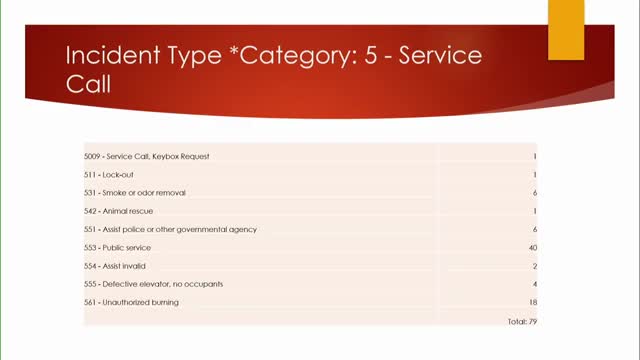Firefighters Rescue Phone from Elevator Shaft in Dramatic Call
July 30, 2024 | North St. Paul City, Ramsey County, Minnesota

This article was created by AI summarizing key points discussed. AI makes mistakes, so for full details and context, please refer to the video of the full meeting. Please report any errors so we can fix them. Report an error »

During a recent government meeting, local officials discussed the vital role of public service assists and emergency response strategies in the community. A notable incident highlighted involved firefighters retrieving a resident's phone from an elevator shaft, showcasing the department's commitment to assisting residents without incurring high contractor costs. This incident exemplified the department's proactive approach to public service, with officials expressing satisfaction from both the property owner and the resident.
The meeting also addressed the frequency of false alarms and the challenges posed by emergency medical service (EMS) calls. Officials noted that a significant portion of their calls—70 to 80%—are EMS-related, often requiring additional personnel to assist in patient transport. This has led to discussions about the efficiency of response protocols, especially during peak hours when resources are stretched.
Concerns were raised regarding the compensation structure for part-time responders, particularly a standby rate that some officials questioned as potentially falling below minimum wage. Clarifications were provided, indicating that this rate is a standby compensation for responders who are not actively working unless called upon, thus aligning with legal standards.
The department's strategy of deploying first responders to medical emergencies was also a focal point. This approach, initiated in 2007, allows for quicker response times by sending trained personnel directly to the scene rather than waiting for full staffing at the station. Officials expressed pride in their response times and the effectiveness of this model, which has been adapted to meet the increasing demand for EMS services.
Overall, the meeting underscored the importance of efficient emergency response systems and the ongoing commitment of local officials to ensure community safety while managing resources effectively.
The meeting also addressed the frequency of false alarms and the challenges posed by emergency medical service (EMS) calls. Officials noted that a significant portion of their calls—70 to 80%—are EMS-related, often requiring additional personnel to assist in patient transport. This has led to discussions about the efficiency of response protocols, especially during peak hours when resources are stretched.
Concerns were raised regarding the compensation structure for part-time responders, particularly a standby rate that some officials questioned as potentially falling below minimum wage. Clarifications were provided, indicating that this rate is a standby compensation for responders who are not actively working unless called upon, thus aligning with legal standards.
The department's strategy of deploying first responders to medical emergencies was also a focal point. This approach, initiated in 2007, allows for quicker response times by sending trained personnel directly to the scene rather than waiting for full staffing at the station. Officials expressed pride in their response times and the effectiveness of this model, which has been adapted to meet the increasing demand for EMS services.
Overall, the meeting underscored the importance of efficient emergency response systems and the ongoing commitment of local officials to ensure community safety while managing resources effectively.
View full meeting
This article is based on a recent meeting—watch the full video and explore the complete transcript for deeper insights into the discussion.
View full meeting
